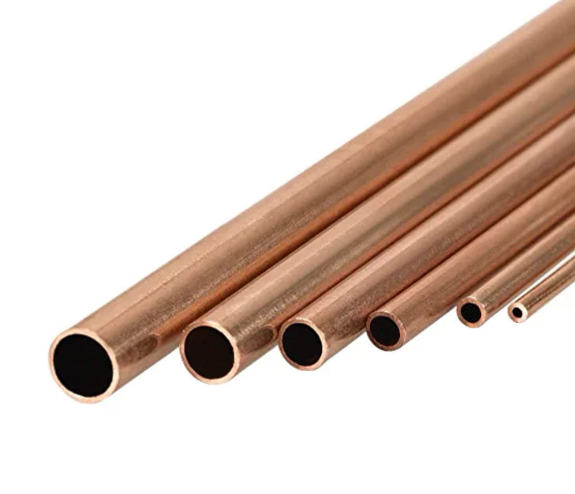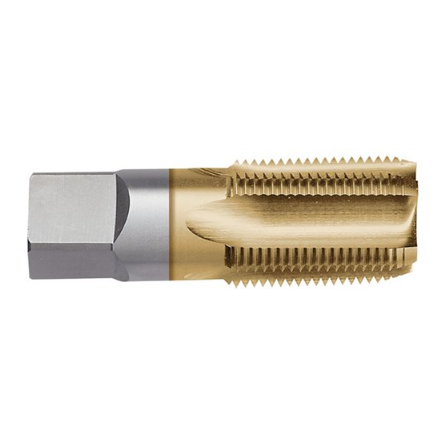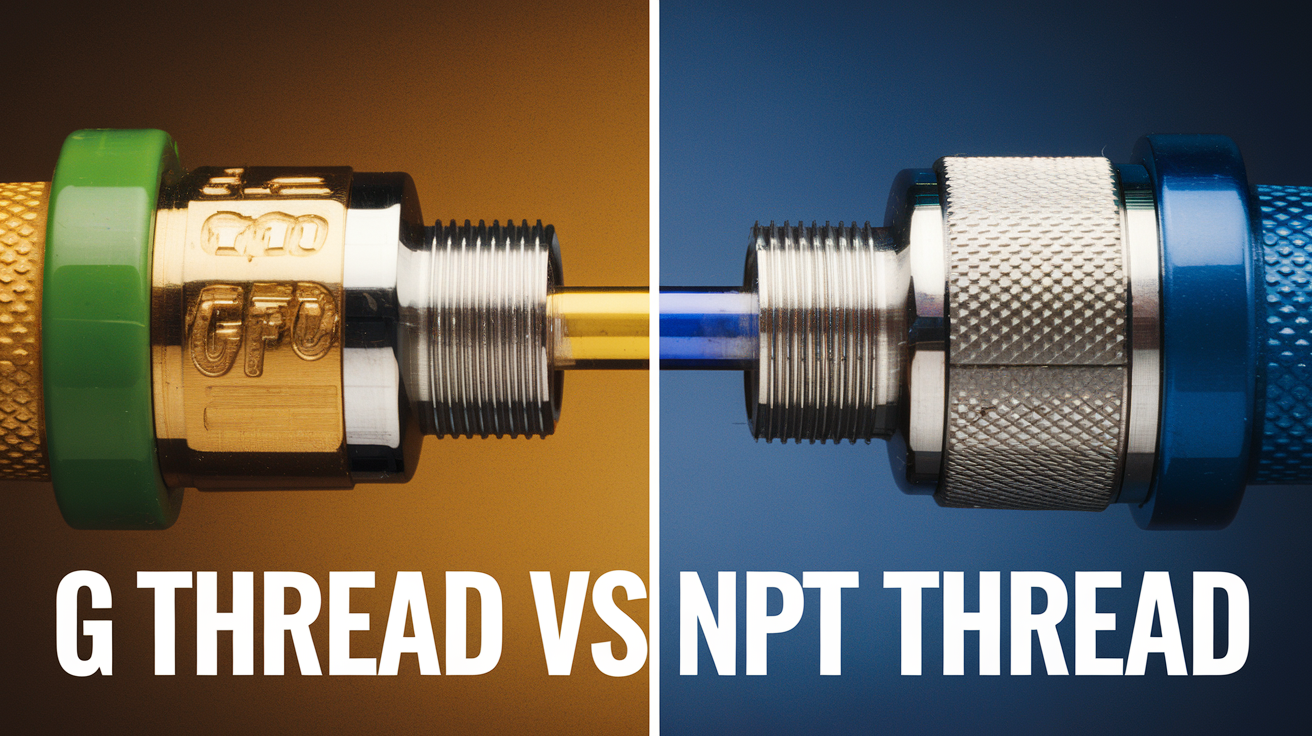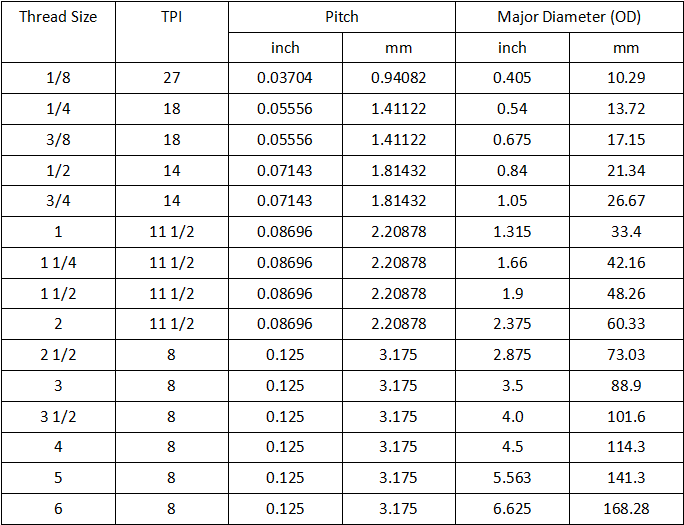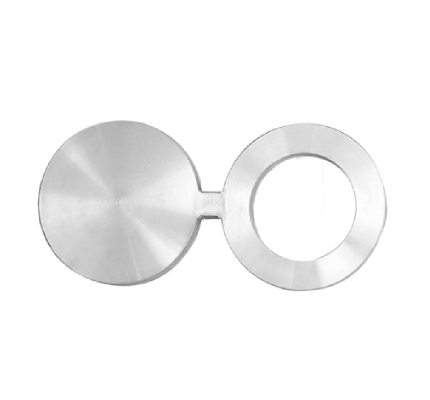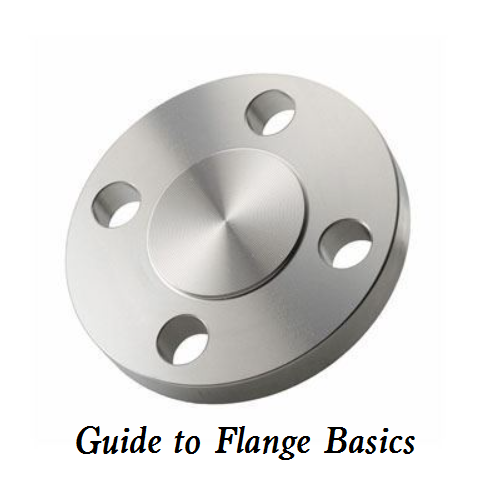How to select the right stainless steel tubing? There are tons of different specifications related to sizes and weight. This article provides comprehensive information about the different schedules of stainless steel pipes and their applications, dimensions, weight, and tolerances.
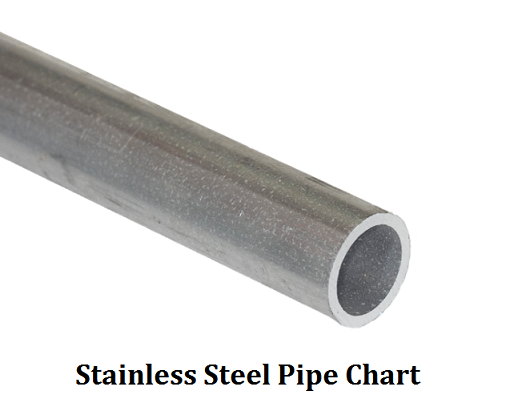
What Is Stainless Steel Pipe Schedule?
A pipe schedule is a standardized system used to define the wall thickness of pipes relative to their diameter. It is an important parameter in piping design and engineering, as it directly affects the pipe’s strength, pressure capacity, and suitability for specific applications.
Stainless steel pipe schedule indicates the thickness of the pipe walls relative to their diameter, the term “schedule” is often abbreviated as “SCH” or “Sch” and is typically expressed as a numerical value, including 5, 10, 20, 30, 40, 60, 80, 100, 120, 140, & 160. The most common stainless steel schedules are 40 and 80. The higher the schedule number, the thicker the pipe wall and the greater its ability to handle internal pressure.
What is schedule 40s pipe?
Schedule 40S pipe is a type of pipe schedule specifically designed for stainless steel pipes. The S following 40 in Schedule 40S or SCH 40S indicates that the pipe is made from stainless steel material, while Schedule 40 is a general-purpose pipe schedule used for various materials. Schedule 40S pipes follow the ANSI/ASME B36.19 standard, which specifies dimensions and requirements for stainless steel pipes.
How to Calculate Pipe Schedule?
Formula
The primary formula used to determine the pipe schedule is: SCH=1000×P/S
Where:
P is the working pressure (in psi).
S is the allowable stress (in psi).
Steps to Calculate the Pipe Schedule
1. Determine the Working Pressure (P): This is the internal pressure the pipe will be subjected to during operation.
2. Determine the Allowable Stress (S): This value is obtained from material specifications and depends on the type of stainless steel and the temperature it will operate under.
3. Calculate the Schedule (SCH): Use the formula above to calculate the theoretical schedule number.
4. Refer to Standard Charts: Compare the calculated schedule number with standard pipe schedule charts to select the appropriate schedule that meets or exceeds the calculated value.
Example
Suppose you need to calculate the schedule for a stainless steel pipe that will operate at 150 psi with an allowable stress of 20,000 psi.
SCH=1000×150/20000=7.5
This suggests a Schedule 10 pipe would be appropriate, but it’s advisable to choose a higher schedule for added safety.
Considerations for Practical Selection
When selecting the appropriate stainless steel pipe schedule in practical applications, several key considerations must be taken into account. Material properties are crucial, as different grades of stainless steel, such as Grade 304 and Grade 316, have varying allowable stress values that directly impact the pipe’s strength and suitability for specific applications. Temperature is another critical factor, as high temperatures can reduce allowable stress, necessitating the application of temperature correction factors to ensure the pipe remains within safe operating parameters. Additionally, it is essential to incorporate a safety margin by choosing a pipe with a higher pressure rating than the calculated value, providing an added layer of protection against unexpected pressures or operational variances. In environments where the pipe may be exposed to corrosive substances, a corrosion allowance should be factored into the wall thickness to maintain integrity over time. In practical applications, particularly in industrial settings like chemical plants or oil refineries, selecting the correct pipe schedule is vital for ensuring the system can handle the required pressure and temperature safely and efficiently. Always refer to established standards such as ASME B31.3 for specific guidelines and consult manufacturer specifications to ensure accurate and reliable data is used in the decision-making process.
What Are the Different Schedules of Stainless Steel Pipe?
1. Schedule 5 Stainless Steel Pipe
- Wall Thickness: Thinnest among standard schedules.
- Pressure Handling: Designed for low-pressure applications.
- Applications: It is commonly used in HVAC systems, drainage systems, and other low-pressure environments where cost-effectiveness and lightweight properties are prioritized.
2. Schedule 10 Stainless Steel Pipe
- Wall Thickness: Slightly thicker than Schedule 5.
- Pressure Handling: Suitable for moderate pressure levels.
- Applications: Often employed in commercial plumbing, general-purpose water and gas lines, and food processing facilities where moderate pressure is required.
3. Schedule 40 Stainless Steel Pipe
- Wall Thickness: Standard thickness for most applications.
- Pressure Handling: Capable of handling higher pressures.
- Applications: Widely used in residential and commercial construction for water supply lines, as well as in various industrial settings due to its balance of strength and versatility.
4. Schedule 80 Stainless Steel Pipe
- Wall Thickness: Thicker than Schedule 40.
- Pressure Handling: Designed for high-pressure applications.
- Applications: Commonly found in industries where chemicals are frequently used, such as in fire sprinkler systems and chemical processing plants.
5. Schedule 160 Stainless Steel Pipe
- Wall Thickness: One of the thickest standard schedules.
- Pressure Handling: Handles extreme pressures.
- Applications: Ideal for the most challenging conditions, such as in the oil and gas industries, where maximum safety and durability are critical.
6. Schedule XXS Stainless Steel Pipe
- Wall Thickness: Thickest among standard schedules.
- Pressure Handling: Capable of withstanding very high pressures.
- Applications: Used in highly demanding mechanical applications where exceptional strength and pressure resistance are required.
Difference Between Schedule 40 and Schedule 80
1. Wall Thickness and Strength
Schedule 40 features a thinner wall than Schedule 80, with a 1-inch Schedule 40 stainless steel pipe having a wall thickness of approximately 3.56 mm. SCH 80 refers to a 1-inch Schedule 80 stainless steel pipe with a wall thickness of about 4.55 mm. So, it has a higher thickness, which provides greater strength and durability, and it is more suitable for withstanding environmental changes.
2. Pressure Capacity
Schedule 40 has a lower pressure capacity and can withstand approximately 300 psi of internal pressure. Schedule 80 exhibits a higher pressure capacity, around 400 psi of internal pressure.
3. Flow Capacity
Schedule 40 has a larger internal diameter than SCH 80, resulting in a higher flow capacity, and it is more suitable for applications requiring significant flow rates.
4. Weight and Cost
Schedule 40 is lighter in weight and more cost-effective, as it requires less material during manufacturing. In contrast, Sch 80 is heavier and more expensive.
5. Applications
Schedule 40 is ideal for low to medium-pressure systems, such as residential water supply, irrigation systems, and drainage pipes. Schedule 80 is best for high-pressure and industrial applications, including chemical plants, hydraulic systems, and fire protection systems.
Stainless Steel Pipe Chart for Dimensions and Weight
Knowing the dimensions and weight of stainless steel pipes is essential. The dimensions, including wall thickness and outer diameter, directly correlate with the pipe’s pressure capacity, which is governed by pressure classes such as 150, 300, 600, 2500, and PN6 to PN64. These pressure classes determine the appropriate grade and dimensions of pipes for specific applications, ensuring they can safely handle the required pressure. Additionally, knowing the weight of the pipes is critical for transportation and installation planning, as it helps assess the load and logistics requirements. While manual weight calculations involve complex factors like pipe thickness, perimeter, length, and material density, a stainless steel pipe chart simplifies this process by providing accurate pre-calculated values.
| Nominal Bore | Outside Diameter | Sch 5S | Sch 10S | Sch 40S | Sch 80S | Sch 160S | Sch XXS | |||||||
| mm | inch | mm | Wall Thickness | Weight | Wall Thickness | Weight | Wall Thickness | Weight | Wall Thickness | Weight | Wall Thickness | Weight | Wall Thickness | Weight |
| mm | (Kg/mt) | mm | (Kg/mt) | mm | (Kg/mt) | mm | (Kg/mt) | mm | (Kg/mt) | mm | (Kg/mt) | |||
| 3 | 1/8 | 10.3 | 1.24 | 0.276 | 1.24 | 0.28 | 1.73 | 0.37 | 2.41 | 0.47 | – | – | – | – |
| 6 | 1/4 | 13.7 | 1.24 | 0.390 | 1.65 | 0.49 | 2.24 | 0.631 | 3.02 | 0.80 | – | – | – | – |
| 10 | 3/8 | 17.1 | 1.24 | 0.490 | 1.65 | 0.63 | 2.31 | 0.845 | 3.20 | 1.10 | – | – | – | – |
| 15 | 1/2 | 21.3 | 1.65 | 0.800 | 2.11 | 1.00 | 2.77 | 1.27 | 3.75 | 1.62 | 4.75 | 1.94 | 7.47 | 2.55 |
| 20 | 3/4 | 26.7 | 1.65 | 1.03 | 2.11 | 1.28 | 2.87 | 1.68 | 3.91 | 2.20 | 5.54 | 2.89 | 7.82 | 3.63 |
| 25 | 1 | 33.4 | 1.65 | 1.30 | 2.77 | 2.09 | 3.38 | 2.50 | 4.55 | 3.24 | 6.35 | 4.24 | 9.09 | 5.45 |
| 32 | 1 1/4 | 42.2 | 1.65 | 1.65 | 2.77 | 2.70 | 3.56 | 3.38 | 4.85 | 4.47 | 6.35 | 5.61 | 9.70 | 7.77 |
| 40 | 1 1/2 | 48.3 | 1.65 | 1.91 | 2.77 | 3.11 | 3.68 | 4.05 | 5.08 | 5.41 | 7.14 | 7.25 | 10.16 | 9.54 |
| 50 | 2 | 60.3 | 1.65 | 2.40 | 2.77 | 3.93 | 3.91 | 5.44 | 5.54 | 7.48 | 8.74 | 11.1 | 11.07 | 13.44 |
| 65 | 2 1/2 | 73.0 | 2.11 | 3.69 | 3.05 | 5.26 | 5.16 | 8.63 | 7.01 | 11.4 | 9.53 | 14.9 | 14.2 | 20.39 |
| 80 | 3 | 88.9 | 2.11 | 4.51 | 3.05 | 6.45 | 5.49 | 11.30 | 7.62 | 15.2 | 11.1 | 21.3 | 15.24 | 27.65 |
| 100 | 4 | 114.3 | 2.11 | 5.84 | 3.05 | 8.36 | 6.02 | 16.07 | 8.56 | 22.3 | 13.49 | 33.54 | 17.12 | 41.03 |
| 125 | 5 | 141.3 | 2.77 | 9.47 | 3.40 | 11.57 | 6.55 | 21.8 | 9.53 | 31.97 | 15.88 | 49.11 | 19.05 | 57.43 |
| 150 | 6 | 168.3 | 2.77 | 11.32 | 3.40 | 13.84 | 7.11 | 28.3 | 10.97 | 42.7 | 18.2 | 67.56 | 21.95 | 79.22 |
| 200 | 8 | 219.1 | 2.77 | 14.79 | 3.76 | 19.96 | 8.18 | 42.6 | 12.7 | 64.6 | 23.0 | 111.2 | 22.23 | 107.8 |
| 250 | 10 | 273.1 | 3.40 | 22.63 | 4.19 | 27.78 | 9.27 | 60.5 | 12.7 | 96.0 | 28.6 | 172.4 | 25.40 | 155.15 |
| 300 | 12 | 323.9 | 3.96 | 31.25 | 4.57 | 36.00 | 9.52 | 73.88 | 12.7 | 132.0 | 33.32 | 238.76 | 25.40 | 186.97 |
| 350 | 14 | 355.6 | 3.96 | 34.36 | 4.78 | 41.3 | 11.13 | 94.59 | 19.05 | 158.08 | 35.71 | 281.70 | – | – |
| 400 | 16 | 406.4 | 4.19 | 41.56 | 4.78 | 47.29 | 12.7 | 123.30 | 21.41 | 203.33 | 40.46 | 365.11 | – | – |
| 450 | 18 | 457.2 | 4.19 | 46.80 | 4.78 | 53.42 | 14.27 | 155.80 | 23.8 | 254.36 | 45.71 | 466.40 | – | – |
| 500 | 20 | 508.0 | 4.78 | 59.25 | 5.54 | 68.71 | 15.09 | 183.42 | 26.19 | 311.2 | 49.99 | 564.68 | – | – |
| 600 | 24 | 609.6 | 5.54 | 82.47 | 6.35 | 94.45 | 17.48 | 255.41 | 30.96 | 442.08 | 59.54 | 808.22 | – | – |
Stainless Steel Pipe/Tubing Tolerance Chart (ASTM)
| ASTM A213/ASME SA 213 Seamless Boiler, Superheater & Heat Exchanger Tubes |
|||
|---|---|---|---|
| Nominal Diameter | Allowable OD Variation (mm) | Wall Thickness Variation | Exact Length Tolerance (mm) |
| Under 25.4 | ±0.1016 | +20%/-0% | 3.175 |
| 25.4-38.1 incl. | ±0.1524 | +22%/-0% | 3.175 |
| 38.1-50.8 excl. | ±0.2032 | +22%/-0% | 3.176 |
| 50.8-63.5 excl. | ±.254 | +22%/-0% | 4.46 |
| 63.5-76.2 excl. | ±.3048 | +22%/-0% | 4.76 |
| 76.2-101.6 incl. | ±.381 | +22%/-0% | 4.76 |
| ASTM A249/ASME SA 249 Welded Boiler, Superheater, Heat Exchanger & Condenser Tubes |
|||
| Nominal Diameter | Allowable OD Variation (mm) | Wall Thickness Variation | Exact Length Tolerance (mm) |
| Under 25.4 | ±0.1016 | +10%/-10% | 3.175 |
| 25.4-38.1 incl. | ±0.1524 | +10%/-10% | 3.175 |
| 38.1-50.8 excl. | ±.2032 | +10%/-10% | 3.175 |
| 50.0-63.5 excl. | ±.254 | +10%/-10% | 4.762 |
| 63.5-76.2 excl. | ±.3848 | +10%/-10% | 4.762 |
| 76.2-101.6 incl. | ±.381 | +10%/-10% | 4.762 |


